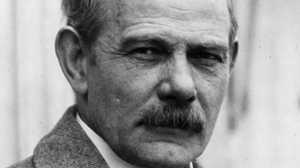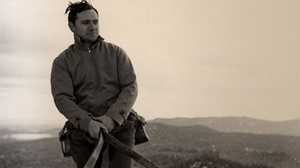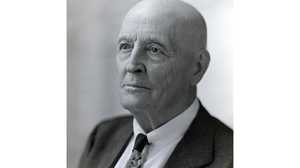Mary Borglum
Mary Montgomery Borglum was born on November 21, 1874 in the city of Marash in the Ottoman Empire, now Turkey. Her parents were missionaries who lived in Anatolia to the end of their lives.
Mary returned to the States to study classics at Wellesley College and then taught at the Girls School in Adana, Turkey. After her mother's death, Mary pursued her studies at the University of Berlin, writing a dissertation on the famed Babylonian ruler Hammurabi, whose legal code is the first known in civilization. In 1901, she and a classmate were the first two women to earn doctorates at Berlin, and The New York Times commented at the time that she was "probably the most accomplished woman in the world" in Oriental languages, having mastered Turkish, Arabic, Greek, Egyptian, Hebrew and Sanskrit.
In 1901, traveling to New York from Berlin by boat, she met a fellow passenger named Gutzon Broglum, who had been working in Paris. Mary was seven years younger than Borglum (who was married at the time) but her intelligence and passion were apparent — and appealing — to the American sculptor. Mary later wrote that she could "argue with Gutzon, sometimes successfully."
While Gutzon made his name in America with sculptures like his "Mares of Diomedes" and a portrait of Alraham Lincoln. Mary taught and then opened up a literary and editorial office with two other women. After many years of living apart, Gutzon's first wife, Lisa Putnam Borglum, granted him a divorce, and he was free to wed Mary in 1909.
Gutzon and Mary bought land near Stamford, Connecticut in 1910 and named their home "Borgland." Mary bore their first child, Lincoln, in 1912. The family moved to Georgia while Gutzon worked on a project at Stone Mountain, and a daughter, Mary Ellis, was born in Atlanta. Unfortunately, problems with his patrons forced the Borglums to leave Stone Mountain in 1925.
Luckily Borglum had already lined up his next big job, and in 1926 the family moved to Keystone, South Dakota, next to Mount Rushmore. In 1929, Gutzon bought a ranch without even telling Mary. She seemed to take it in stride, and was soon managing a household that included a cook, a ranch manager, a tutor for the children, and a driver. If the driver wasn't around, Mary would encourage the ranch manager, Emil Flick, to drive Gutzon around, or drive him herself -- anything but let the artist drive himself, since he was apt to jot down notes and become distracted from the road.
Gutzon was not the most financially stable partner, but Mary somehow made it all work out. "Mother would make all things possible," said Mary Ellis. "I don't know how she did it, but she did." She also managed to patch up Gutzon's feuds, helping him reconcile with John Boland of the Mount Rushmore Commission.
After Gutzon's death in 1941, their son Lincoln took over the project and finished work there in the autumn of that year. Mary defended her husband's reputation through letters and a book, Give the Man Room, written with Robert Casey. Her granddaughter Robin Carter said, "She had defended him against so much criticism in his lifetime and she felt, after he died, that what he'd accomplished was beyond criticism." Mary Borglum died in 1955.







